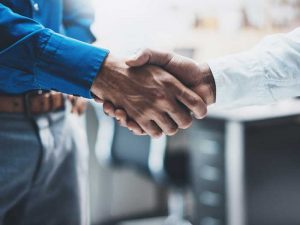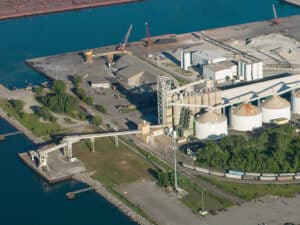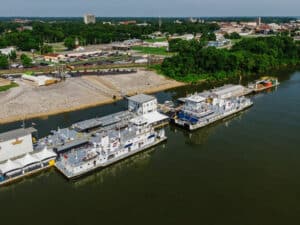
A Q&A with Jennifer Carpenter, AWO’s new CEO
Written by Heather Ervin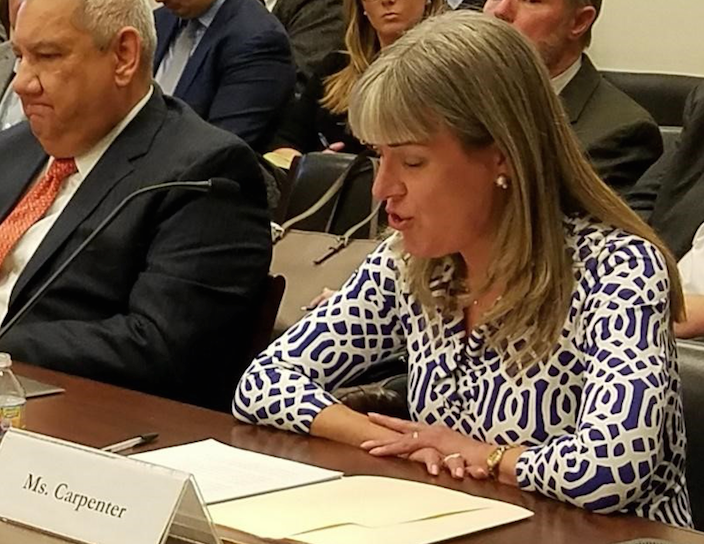
Jennifer Carpenter, new AWO CEO, testifies on behalf of the nation's waterways. (Credit: AWO)
In her first year as president and CEO of the American Waterways Operators (AWO), Jennifer Carpenter, who began her term last month, says she has a lot of ground to cover with the organization’s members—despite her 30-year career with the organization.
As the national advocate for the U.S. tugboat, towboat and barge industry, AWO members operate on the rivers, coasts, Great Lakes and harbors of the United States, where they move vital commodities and provide tens of thousands of jobs.
To get updated on regulations and topics of importance to the commercial inland marine shipping industry, we sat down with Carpenter to get a feel for what is going on and what can be improved upon.
Marine Log (ML): You’re based in D.C. Which Congressional committees need the closest attention by our industry?
Jennifer Carpenter (JC): I would say the big three are the House Committee On Transportation & Infrastructure, which has broad jurisdiction on the House side; the Senate Committee on Commerce, Science and Transportation, which is overseeing everything from the Jones Act, maritime safety and maritime security; and the U.S. Senate Committee on Environment and Public Works, which deals with WRDA (Water Resources Development Act) and so on. Our industry covers a lot of ground and many committees affect us, but if I had to really zero in on the committees that need for us to pay the closest attention to them, it would be these three.
ML: We know that waterways are the greenest means of transporting freight, but what is the industry doing to further reduce its environmental footprint?
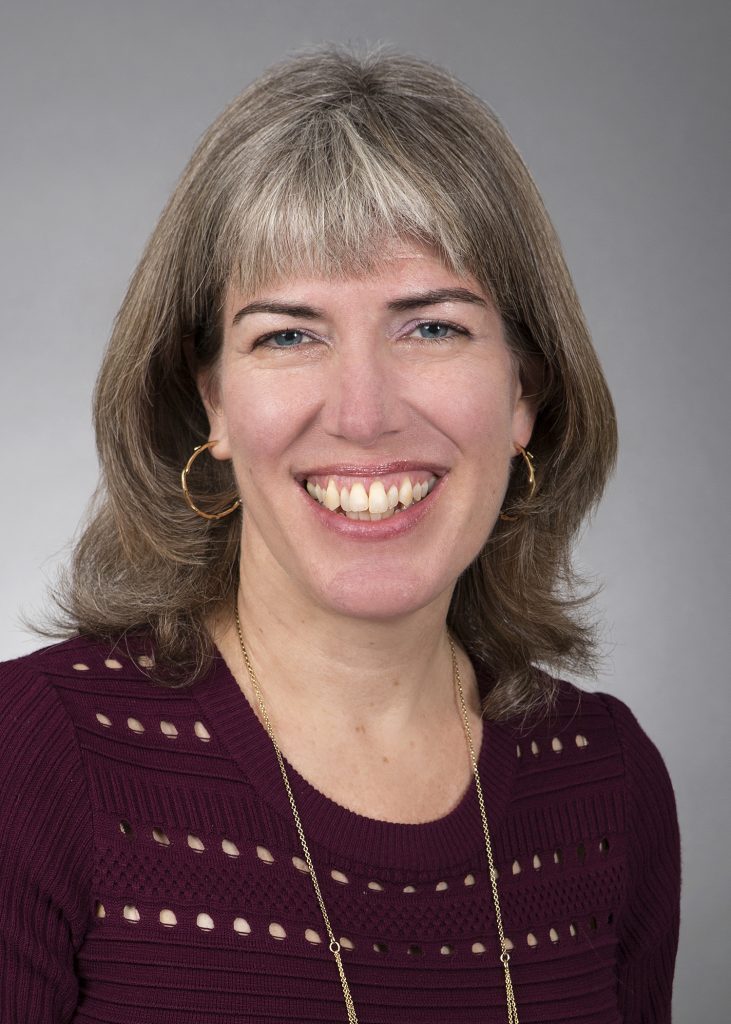
JC: The industry is really looking at air quality, water quality, waste minimization and management, energy efficiency, and they’re also looking at new propulsion technologies, LNG and hybrid. At AWO, part of our mission is to lead and support members in continuously improving safety, security and environmental stewardship. It’s literally a part of our mission.
Our board of directors has put together an environmental stewardship working group, and it’s underway now. One thing they’re working on is how can we develop tools and resources that will really help companies progress up the ladder on issues, such as air quality, water quality, waste minimization, energy efficiency, etc. This isn’t looking to impose burdens or requirements on our members, but it’s really looking at helping them have a framework and identify areas that maybe they want to or should focus on. We’ll be working on this over the next year, and it’s something that I’m really excited about.
ML: Which part of the inland waterways system infrastructure is in the most urgent need of a fix?
JC: There is a tremendous need throughout the waterway system. What would be helpful in terms of enabling the Army Corps of Engineers to meet that need would be a change in cost share for construction and major rehabilitation of inland waterway projects.
Right now, the cost share on the deep-draft side is 75% federal and 25% Inland Waterways Trust Fund (IWTF). We would like to see that same cost share put into place on the inland system, so that we are dividing 75% federal and 25% IWTF. That is really important. Congress has made that change and adjusted the cost share on the inland system for particular projects in the past. They’ve done it for Olmsted Locks and Dam and they’re doing it now for the Chickamauga Lock Replacement Program, but it would be really helpful to again have this parity with the deep-draft cost share. That would just enable us to use money more efficiently, and to not only get projects done faster, but ultimately, cheaper and more efficiently. In that case, you’re plowing through the project and not starting and stopping it or doing it a little bit at a time.
Additionally, there really is a need to move forward and take the next step on NESP (the Navigation and Ecosystem Sustainability Program). We’re really talking about recapitalizing the locks and dams on the Upper Mississippi River system. That project was authorized many years ago now, and we really need to move forward with the pre-construction, engineering and design and get it moving forward. So, that’s an area that I’d call out as needing attention.
ML: What will the biggest challenges be for inland commercial vessel owners and operators in 2020? Have these challenges changed at all over the last few years?
JC: I think of this in terms of the things that we can influence and control and the things that are out there that we can’t control but that we can prepare for. Lately, we have seen some upward movement in inland liquid business on the petrochemical side. It’s a very positive thing. On the dry cargo side, there have been some real challenges between high water, dredging, the trade war, and declining coal volumes. Challenges are definitely on the dry cargo side of the system.
There are some things that are outside of our direct circle of influence, such as the weather, but what can we do? From an infrastructure funding standpoint and as far as planning for future high-water events, we can make sure we are synced up with the Coast Guard and the Army Corps of Engineers so that we can keep traffic moving on the rivers safely, and so that we can get dredging done and restore the system to operation when there is temporary interruption.
On the regulatory side of things, we really want to make sure that the government isn’t doing anything that is getting in the way of operators moving their customers’ cargo safely, securely and efficiently. In 2020, we are approaching the midpoint of Subchapter M and the Certificate of Inspection phase-in period. We want to make sure that the Coast Guard is implementing regulations consistently, practically and making sure that they are in fact enforcing them. Vessel owners have made tremendous investments in preparing for and complying with Subchapter M, so they need that to be consistently implemented so that they’re not having to ask the same questions and get different answers as they go from one Coast Guard sector to another. Operators also need to know that the Coast Guard is serious about enforcing Subchapter M so that the rule really achieves its promise of raising the bar of safety across the industry. Those are two issues that we’ve really been pressing the Coast Guard hard on: consistency in the implementation of Subchapter M and proactive, robust enforcement. We’ve had a long time to get ready for it.
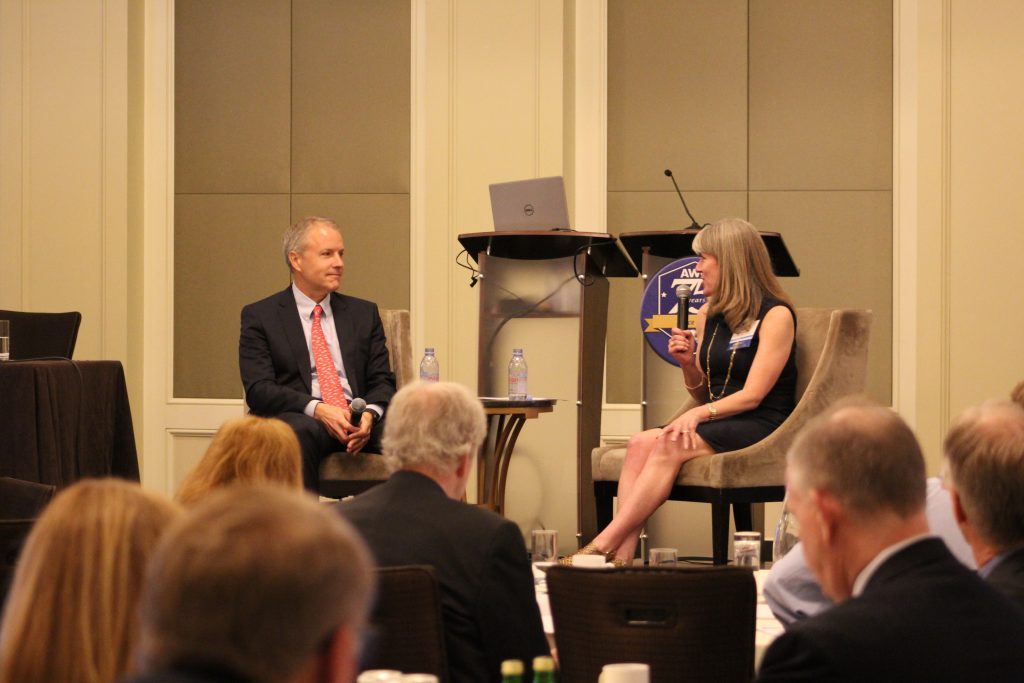
ML: What’s on the horizon in terms of regulations or funding that the industry should be prepared for?
JC: I would give a heads up that since the passage of the VIDA (Vessel Incidental Discharge Act) at the end of 2018, the EPA has been working with the Coast Guard on the implementing stipulations for that. Passing the law was a critical first step in putting an end to this patchwork of state requirements on vessel discharge, including ballast water and kind of harmonizing the regulatory system, so we don’t have the Coast Guard and the EPA operating on two different tracks and two different statutory systems. So now we have one law, VIDA.
The agencies have been working to implement that. We have been pleased by what we have seen and heard in terms of cooperation, consultation and dialogue between the agencies. We’ll soon get our first look at what the product will look like. The EPA will publish phase one notice of proposed rulings on standards of vessel discharges this year. So we’ll get a chance to see what they came up with and comment on that, and they will go and revise that rule by the end of the year, and then the ball will be in the Coast Guard’s court to meet those standards on a vessel.
ML: Is Sub M prompting AWO members to retire more elderly boats?
JC: I think vessel owners are looking at their fleets, and they’re saying “where are we in terms of Subchapter M compliance and the investment that’s needed to maintain compliance.” And again, they’re asking questions. Given the economic life of this vessel, what is a good business decision? And in some cases, companies are saying the investment that would be needed to bring this boat to Subchapter M standards and keeping it there is not a good use of funds. We aren’t seeing a massive retirement of vessels, but it’s a calculus for companies. What really makes sense here? Do I have older boats that it doesn’t make sense to put this kind of money into? It all depends on their market and the state of their equipment.
ML: And finally, what led you to AWO and what would you like to have achieved during your tenure as president and CEO?
JC: It’s sort of funny. I joke that I grew up in St. Louis, but I had to move to Washington, D.C., to discover the barge industry. I grew up with the Mississippi River in my backyard, and it wasn’t until I came to D.C. that I really developed a full appreciation for all that this industry does for American jobs, security and economy. I started at AWO as a “green deckhand” you might say. I’ve worked my way up here, and it’s been an absolute labor of love. I love the people who make up this industry, and I have such a respect for them. It’s a pleasure and it’s great fun to work on their behalf.
I want to make sure that we are really helping this industry to survive, adapt and thrive in a rapidly changing business and public policy environment. And to make sure that we are not only helping our members meet the challenges that are in front of them today, but working with them to prepare for and anticipate meeting the challenges emerging on the public policy and safety front. I’m really excited about hitting the road this year and spending a lot of time with AWO members and understanding what’s on their minds and what they are concerned about. I also look forward to figuring out how AWO might need to retool and evolve as an association so that we can help them meet those challenges, because the world is changing fast.
ML: What other public policy issues are important to the inland industry?
JC: The Jones Act, which is what ensures what we have is an American industry – that these are American-owned vessels, American crews and jobs, American shipyards that are building these vessels. That is as fundamental as the locks and dams. Locks and dams are the physical infrastructure of the industry, and the Jones Act is the statutory infrastructure of the industry. We’ve got to make sure that it remains intact. It is incredible to me to look around the globe and see what our strategic competitors are doing and see the threat environment out there, and to think that anybody might think it’s a good idea to give up control of the vessels that operate on our inland waterway system. I just don’t get it, but there are people who think that would be a good idea. And they decided that with 2020 being the 100th year of the Jones Act, that it must be old and out of style and this would be a good year to get rid of it. We would do that to the great peril of not only our industry and the great jobs its provides, but our country. When did American security become a flavor of the month that can go out of style? It’s as relevant today as it’s ever been, and I’m excited to work with AWO members to make sure it stays here.

![Tom Frazier aground and listing to starboard on Feb. 11, 2024. [Photo: U.S. Coast Guard]](https://www.marinelog.com/wp-content/uploads/2025/06/Towboataground-300x225.jpg)
